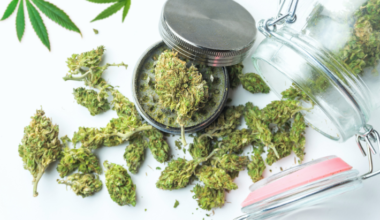Mexico is moving ahead on medical marijuana regulation — and all hemp and marijuana companies that envision doing business there in the future should start preparing now, lawyers say.
The Mexican government has begun setting a regulatory structure for medical cannabis in the country, making it possible for companies to start applying for research licenses to bring products to market. The move comes as the country is still working on approving hemp and adult-use marijuana.
Attorneys who have been following developments in the country say entering the medical market now will be positioned to quickly launch in the recreational market when it becomes a reality, noting that was the case in the U.S. and Canada.
“Any person or corporation that wants to get into the cannabis industry in Mexico, that’s the starting point,” said Roberto Ibarra Lopez, an attorney with Lawgic in Guadalajara, Mexico.
Mexico’s congress is under an April 30 deadline to legalize cannabis for all uses – a directive from the country’s supreme court, which concluded the plant’s prohibition was unconstitutional.
That legalization effort has already been delayed several times, but a path for doing business on the medical side started opening Jan. 12, when federal regulators published regulations for implementing the law.
It’s been legal to apply for cultivation licenses for medical cannabis for some time, but it’s been impossible to do anything.
That’s because although Mexico legalized cannabis for medicinal use in 2017, it took the federal government three years to publish its regulations. Those are still being tweaked, but attorneys expect the federal government to start issuing licenses by June.
It will take time to see products on the market, however.
Cannabis products, including hemp with up to 1% THC, have to go through clinical trials before they’re sold and growing and harvesting on an industrial scale to supply the medical market.
Imports are limited to finished goods and only pharmaceutical companies can do it. Cultivation licenses can be obtained anywhere in Mexico but must be used in the state listed on an application, which requires proof of ownership of the land where cannabis will grown.
“The universe of activities is open,” Lopez said.
Although the congressional measure contains limits on foreign investment, the medical regulations don’t.
The department of agriculture will oversee cultivation and tracing requirements with a couple of other agencies, as well registering and importing seeds.
Mexico’s equivalent of the Food & Drug Administration is in charge of labeling and prescriptions, and will have oversight of doctors and clinical research. The only advertising allowed is between pharmaceutical companies and the doctors who prescribe cannabis.
The regulations don’t include a lot of detail on processors or manufacturers and hemp is an afterthought without rules governing its production, although it’s allowed.
“You have the right. The problem is you are unable exercise that right because it’s not regulated,” said Adrian Cisneros Aguilar, the lead cannabis attorney in Mexico with Harris Bricken.
Supporters of industrial hemp hope to have standalone regulations for the plant in the coming months, rather than having it be included in the cannabis legalization bill lawmakers are considering. Congress returned to work on that proposal this week.
Despite the perpetual delays, attorneys are optimistic lawmakers will eventually legalize all uses of cannabis this year.
“You’re not going to apply for everything at once, but by 2023 everything is going to be open. The market is going to be fully legal,” Aguilar said.
Ivan Moreno can be reached at [email protected]
Medical Disclaimer:
The information provided in these blog posts is intended for general informational and educational purposes only. It is not a substitute for professional medical advice, diagnosis, or treatment. Always seek the advice of your physician or other qualified healthcare provider with any questions you may have regarding a medical condition. The use of any information provided in these blog posts is solely at your own risk. The authors and the website do not recommend or endorse any specific products, treatments, or procedures mentioned. Reliance on any information in these blog posts is solely at your own discretion.






